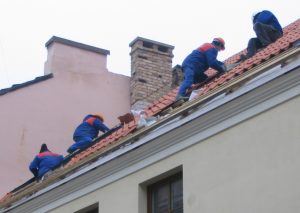House Renovations: Australia’s Next Construction Boom?

The current edition of the HIA Renovations Roundup was just recently released. The report marks Australia’s many extensive pulse-taking exercises of the country’s $30 billion-plus house restoration market. Along with examining the existing state of the market, the Renovations Roundup also offers projections of restoration activity for each of the states and areas out to the year 2020.
Lots of people have been amazed to discover that the efficiency of the slab crane for hire in the house restorations market is not always in step with that of brand-new house building activities. Certainly, occasions over the past years have highlighted this divergence rather starkly. For instance, while the brand-new house building side of domestic construction enjoyed its biggest and longest ever upturn between 2012 and 2016, restoration activities and house extensions sustained a sharp contraction between 2011 and 2013, with the volume of activity falling by some 14.4 percent over 2 years. The occurring healing was sluggish to gather momentum – a snail would have made much a faster advance to begin with. Nevertheless, by the end of 2016, remodellings activity was 8.5 percent up on its 2013 trough.
Among the essential functions of the HIA Renovations Roundup is that the outcomes of a distinct quarterly market study exist and evaluated. In regards to its reach, the restorations market is a generous one: the key individuals are extremely focused among sole traders or little companies, with the radiance encompassing a more cohort of subcontractors such as electrical contractors, plumbing professionals, painters, extension builders, carpenters and plasterers.
In regards to the particular kinds of remodelling work done, repair works and interior decorating are the support of the marketplace in the post GFC world. Other crucial sources of work recognized by the study include bathrooms and kitchens. These locations of your house have generally been popular to remodel, and when it comes to a kitchen area, a bigger square metre footprint typically emerges from the reno task. The HIA-GWA Kitchens & Bathrooms Report 2016/17 was launched in early April and provides thorough coverage of the activity both in regards to brand-new houses, and bathroom and kitchen remodelling work.
One section of restorations that has been hard strike in the more careful post-GFC world is building extensions and double storey additions. The Renovations Roundup study does offer proof that this essential part of remodelling activity is once again gaining steam, a finding supported by anecdotal proof. This is a motivating advancement.
 With conditions in the remodellings market substantially quieter than in brand-new house structure, over one third of renovators have shown that they have handled brand-new house structures working this cycle. Over recent years, an understanding has actually grown that Knock-down Rebuild (KDR) work has actually been changing a few of the bigger remodelling tasks. The current study results mostly refute this theory – simply 28 percent of participants are of this viewpoint. In all likelihood, we are seeing healing in both KDR and building extensions, where the healing in the previous section of the marketplace started initially.
With conditions in the remodellings market substantially quieter than in brand-new house structure, over one third of renovators have shown that they have handled brand-new house structures working this cycle. Over recent years, an understanding has actually grown that Knock-down Rebuild (KDR) work has actually been changing a few of the bigger remodelling tasks. The current study results mostly refute this theory – simply 28 percent of participants are of this viewpoint. In all likelihood, we are seeing healing in both KDR and building extensions, where the healing in the previous section of the marketplace started initially.
The healing in remodelling activity that has played out over the past couple of years including low loaders and crane hire in South Australia was triggered by the decrease to historical lows of rate of interest throughout the spectrum. This permitted homes to undertake loaning for house remodelling operations at lower expenses. That this environment was preceded by numerous years of heavy conserving by the home sector implied that a big reserve of money was also offered for the functions of restorations work.
Contributed to the mix was the strong upturn in house rates since 2012 in Sydney and Melbourne. This more than renewed the house equity tanks, specifically in Sydney, which had been operating on empty for almost a years. This general circumstance has offered potential renovators in Australia’s two biggest cities with the self-confidence and – more notably – the cash to give the okay to remodelling deals with their houses.
